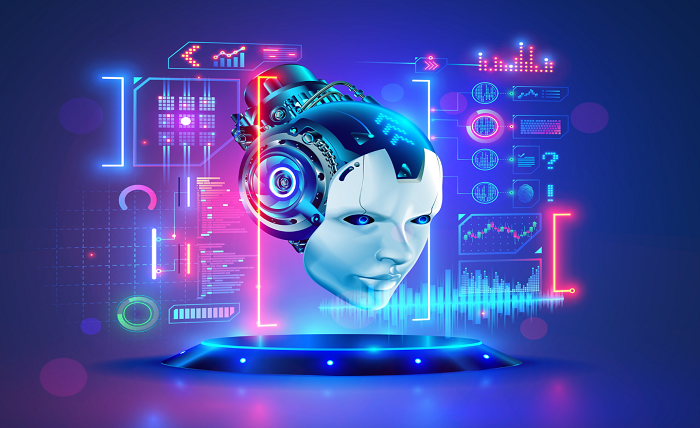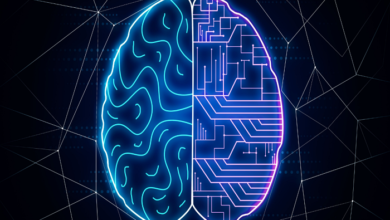
Exploring the Top 10 AI Keywords in Today’s Technology Landscape”
Artificial intelligence (AI) has become a buzzword in today’s technology landscape, with companies and researchers alike investing heavily in the development and implementation of AI-powered systems. From self-driving cars to virtual assistants, AI is being used in a wide range of applications, and it’s no surprise that the term has become one of the most searched and talked about topics in the tech industry. In this article, we will explore the top 10 AI keywords that are shaping the future of technology and how they are being used in various industries.
- Machine Learning
Machine learning is a subfield of AI that involves the development of algorithms that can learn from and make predictions or decisions without being explicitly programmed. It is the process of training a computer to recognize patterns and make decisions based on that data. Machine learning is used in a wide range of applications, including image and speech recognition, natural language processing, and predictive analytics. - Deep Learning
Deep learning is a subset of machine learning that involves the use of neural networks with multiple layers. These networks are able to learn and make decisions based on large amounts of data, making them well-suited for tasks such as image and speech recognition. Deep learning has been used to achieve state-of-the-art results in a number of applications, including computer vision, natural language processing, and speech recognition. - Natural Language Processing (NLP)
Natural Language Processing (NLP) is a subfield of AI that deals with the interaction between computers and human languages. It involves the use of machine learning, deep learning, and other techniques to enable computers to understand and generate human language. NLP is used in a wide range of applications, including chatbots, virtual assistants, and sentiment analysis. - Computer Vision
Computer vision is the field of AI that focuses on the development of algorithms and models that enable computers to interpret and understand visual data from the world around them. It involves the use of techniques such as image recognition, object detection, and image segmentation to enable computers to analyze and understand images and videos. Computer vision is used in a wide range of applications, including self-driving cars, surveillance systems, and medical imaging. - Robotics
Robotics is the branch of AI that deals with the design, construction, and operation of robots. It involves the use of sensors, actuators, and control systems to enable robots to perform a wide range of tasks, including manufacturing, assembly, and transportation. Robotics is a rapidly growing field, with applications in areas such as industrial automation, healthcare, and transportation. - Reinforcement Learning
Reinforcement learning is a type of machine learning that focuses on training models through trial and error. It involves the use of rewards and punishments to guide the learning process, allowing the model to learn from its mistakes and improve over time. Reinforcement learning is used in a wide range of applications, including game playing, robotics, and autonomous systems. - Generative Adversarial Networks (GANs)
Generative Adversarial Networks (GANs) are a type of neural network that are used for generative tasks, such as creating new images, videos, or text. They involve the use of two neural networks, a generator and a discriminator, that work together to generate new data that is similar to the training data. GANs have been used to generate realistic images, videos, and even music. - Neural Networks
Neural networks are a type of machine learning model that are inspired by the structure and function of the human brain. They involve the use of layers of interconnected nodes, which process and transmit information in a similar way to neurons in the brain. Neural networks are used in a wide range of applications, including image and speech recognition, natural language processing, and predictive analytics. They are the backbone of many AI-powered systems and have been instrumental in the recent advancements in the field of AI.
- Big Data
Big Data is a term that refers to the large amounts of structured and unstructured data that is generated by organizations and individuals on a daily basis. AI systems, particularly those that use machine learning and deep learning, require vast amounts of data to train and improve their performance. Big Data technologies and techniques are used to store, process, and analyze this data, making it possible for AI systems to learn and make decisions based on it. - Edge Computing
Edge computing is a distributed computing paradigm that brings computation and data storage closer to the devices and sensors that generate the data. It involves the use of edge devices, such as gateways and routers, to process and analyze data before it is sent to the cloud or a central data center. Edge computing is particularly useful in IoT (Internet of Things) applications, where the devices generate a large amount of data and have limited connectivity to the cloud.
Conclusion:
AI is a rapidly growing field with a wide range of applications and it’s no surprise that the term has become one of the most searched and talked about topics in the tech industry. The top 10 AI keywords discussed in this article are shaping the future of technology and are being used in various industries such as healthcare, transportation, manufacturing and many more. From Machine Learning and Deep Learning to Natural Language Processing and Computer Vision, these keywords represent some of the most exciting and important developments in the field of AI. It is important to note that these keywords are not isolated and are often used together to create powerful AI systems. As the field of AI continues to evolve, it will be interesting to see how these keywords will continue to shape the future of technology.




